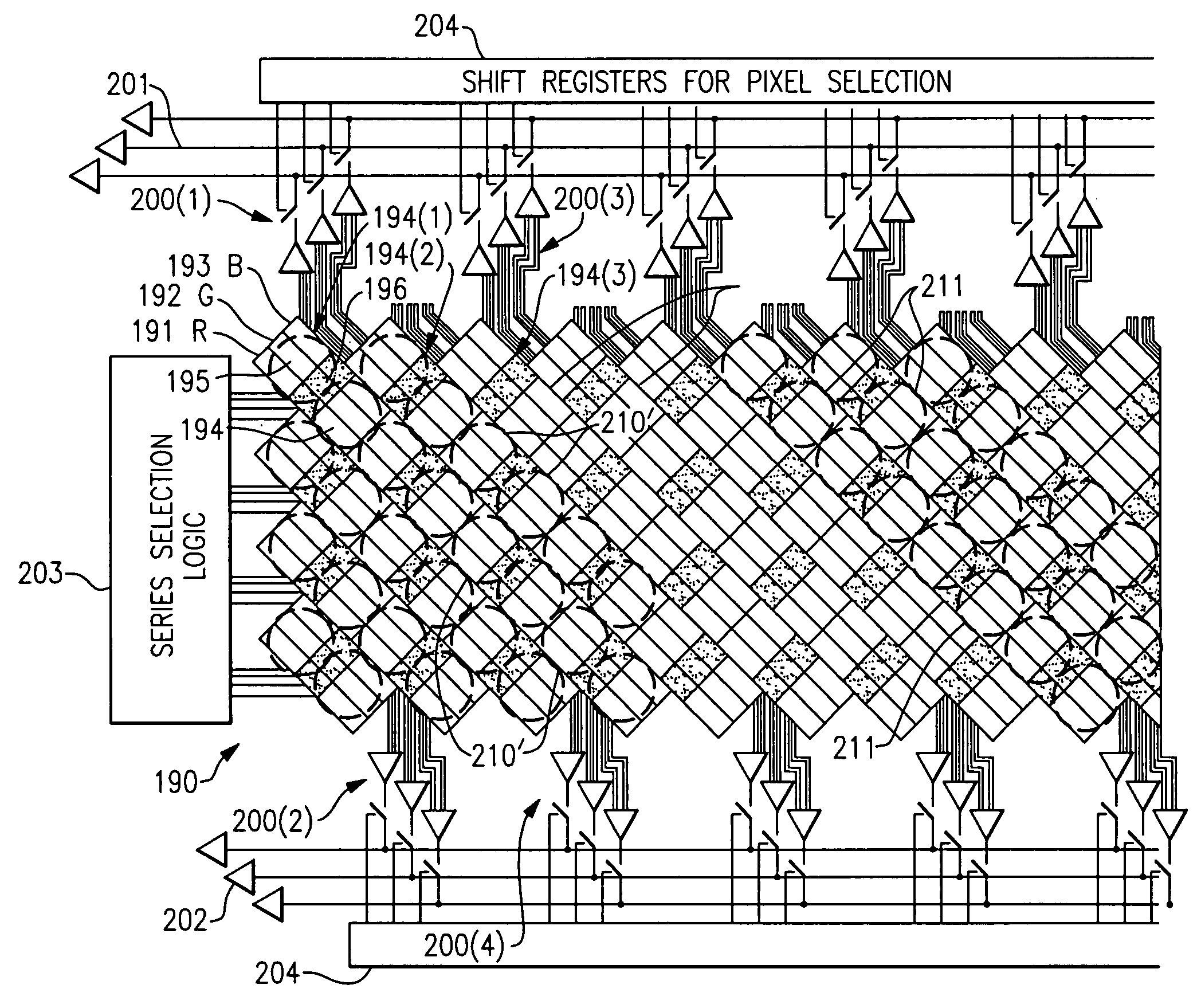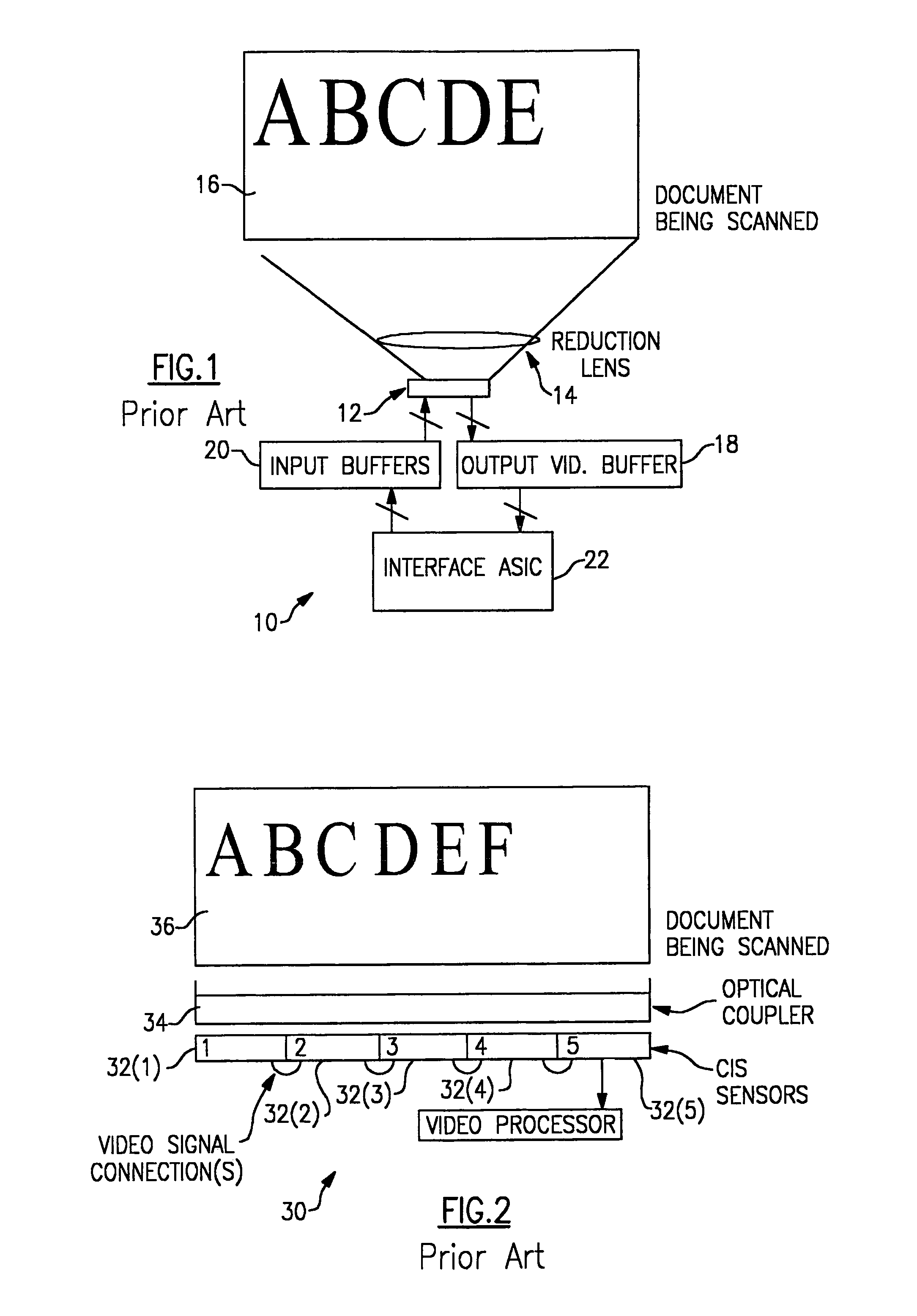Scanning imager employing multiple chips with staggered pixels
a scanning imager and image capture technology, applied in the field of solid state imagers and image capture systems, can solve the problems of ccd imagers, speed limitations, and size limitations
- Summary
- Abstract
- Description
- Claims
- Application Information
AI Technical Summary
Benefits of technology
Problems solved by technology
Method used
Image
Examples
Embodiment Construction
[0036]With reference now to the Drawing, and initially to FIG. 4 thereof, a system 40 for capturing an image of an object 42, e.g., text, in accordance with an embodiment of the invention includes a lens 44, a CMOS imaging system 46, an image control processing system 47, and an output bus 51. Other equivalent components could be used. The image control processing system 47 may be included on the CMOS sensor 46 to eliminate need for a separate component and reduce overall cost. The present invention provides a system for capturing an image with greater flexibility and lower cost than prior systems that use CCD or CIS technology. Additionally, the present invention provides a unique offset pixel structure for use in the CMOS imaging system 46.
[0037]As shown in FIG. 3, the lens 44 is positioned in the system to focus or direct the image being scanned or otherwise captured onto the CMOS imaging system 46. In this embodiment, the lens 44 reduces the image being scanned onto the CMOS ima...
PUM
 Login to View More
Login to View More Abstract
Description
Claims
Application Information
 Login to View More
Login to View More - R&D
- Intellectual Property
- Life Sciences
- Materials
- Tech Scout
- Unparalleled Data Quality
- Higher Quality Content
- 60% Fewer Hallucinations
Browse by: Latest US Patents, China's latest patents, Technical Efficacy Thesaurus, Application Domain, Technology Topic, Popular Technical Reports.
© 2025 PatSnap. All rights reserved.Legal|Privacy policy|Modern Slavery Act Transparency Statement|Sitemap|About US| Contact US: help@patsnap.com



